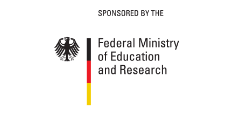Quick facts
Project title:
Evolution of adhesive toepads in geckos - locomotor morphology and performance in the genus Cyrtodactylus (Gekkota, Squamata)
Object of research:
Gekkonidae, Cyrtodactylus, Hemidactylus, Gecko feet, adhesive lamellae
Description
Effective locomotion is critical for animal survival and has driven the evolution of specialized morphological structures. The evolution of morphological novelties likely leads to key innovations facilitating adaptive radiations. But to fully understand the evolution of complex morphological structures, it is important to study intermediate forms in morphological series, e.g. species having evolved some, but not all traits forming the complex structure in question.
The adhesive toepads of geckos (and other lizards), which have attracted much research interest from biologists and engineers alike, are complex morphological structures, consisting of multiple, laterally expanded scales, supported by specialised muscles and tendons, and covered with adhesive microstructures (setae). These facilitate the use of complex three-dimensional microhabitats through friction and adhesion. But toepad evolution is poorly understood, partially due to the scarcity of studies on morphologically intermediate forms.
One suggested example of intermediate toepad morphologies are members of the gecko genus Cyrtodactylus, forming a morphological series from pad-less Cyrtodactylus species over intermediate forms (e.g., C. brevipalmatus) towards fully developed toepads in their sister genus Hemidactylus. This morphological series has been proposed based on scale shape and internal morphology, but the microornamentation of these intermediate forms is mostly unknown. Furthermore, evolution should act primarily on performance rather than on morphology directly, but locomotor performance data for most gecko species are missing.
Therefore, I aim to disentangle the evolution of adhesive toepads in lizards, using the genus Cyrtodactylus as a model clade. I combine modern morphological techniques (e.g., scanning electron microscopy, computer tomography) with functional experiments and ecological data to reconstruct the evolution of adhesive toepads, and to understand the role of incipient adhesive structures in the locomotion of geckos. This will help us to understand why, and under which circumstances, adhesive toepads start to evolve, and how the potentially gradual evolution of toepads takes place.
Location







